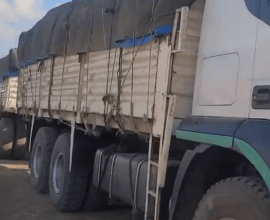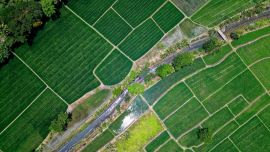Amid all the gloom and pessimism about Africa, there is good news that should make Africans walk with their heads a little higher: the African Continental Free Trade Area.
Since the AfCFTA was launched in January 2021 after many years of discussions, some 47 African countries have ratified the agreement.
One of its the features is the Guided Trade Initiative under which the AfCFTA secretariat identifies demand and supply for goods or products, and then matches the countries to work out details of the transactions.
For example, bringing Algeria and Uganda together to negotiate the sale of milk from Uganda to Algeria under AfCFTA rules. The secretariat guides the trading parties through the legal and operational phases. This inaugural transaction prepares both countries to trade in future without the support of AfCFTA itself.
There are now 96 items which can be traded under the Guided Trade Initiative. The list includes batteries, ceramic tiles, coffee, corn starch, dried fruits, glucose syrup, pasta, processed meat products, tea, sisal fiber, and sugar, among others.
An Important Breakthrough
One of the impediments to growth in intra-African trade has been the need to conduct business through a currency that is not likely to fluctuate suddenly, a hard currency. This is a slow and expensive process.
To avoid this bottleneck, the Pan African Payment and Settlement System has been created under AfCFTA.
At its most basic, two Direct Participating Banks, usually the apex bank in a country, will each hold local currency accounts in the other. For example, Algeria will hold a local currency account in Uganda; Uganda will hold a similar account in Algeria. In practice, Ugandan milk exporters will be paid in local currency for their milk; Algeria milk importers will pay in local currency. There is no need for the transaction to transit through the euro, the US dollar, the French franc, or another hard currency.
PAPSS is a major step in the right direction for Africa. Among other things, it will strengthen African currencies especially in countries with good trade and investment climates including social stability.
Across the continent, countries are coming forward to trade under the Guided Trade Initiative. By 2022, eight countries—Cameroon, Egypt, Ghana, Kenya, Mauritius, Rwanda, Tanzania and Tunisia— were trading under this match-making program. One year later that number was 31 with South Africa, the continent’s leader in industrialization, launching its inaugural trade under AfCFTA in January 2024.
Of course, all African countries will still need the dollars, euros, francs, and yens to trade with countries outside Africa.
Presently, intra-Africa trade is only 14.4 percent of total African exports. UNCTAD estimates that AfCFTA could boost intra-Africa trade by about 33 percent and cut the continent’s trade deficit by 51 percent.
A closer look shows that intra-African trade comprises 61% processed and semi-processed goods. That is indeed encouraging because it means that value chains are starting to link African countries. Goods are partly produced in one country and transported to another for finishing. Finished goods are made in Africa. The outline of Africa’s long-held dream of an integrated economic bloc is slowly emerging. Africans should feel emboldened.
The World Bank forecasts that when it is fully in place, AfCFTA will increase trade within the region by 80 percent to $532bn by 2035, partly helped by improved technology-driven efficiency.
AfCFTA will deepen integration, foster trade and investment, enhance the mobility of capital and labor, support industrialization, and the development of a robust services sector.
This is a modest start of the journey towards creating a market of 1.3 billion people with a combined gross domestic product of $3.4 trillion, and possibly becoming the world’s biggest free-trade zone by area when it is fully operational by 2030.
It is also significant that most of Africa’s traditional partners in modernization have shown little or no support for AfCFTA. They prefer bilateral trade frameworks. China is an exception. Many projects on ports, roads and railroads that China has supported in the last forty years across the continent are the framework for an integrated economic bloc.
Stay on course, Africa! Focus on what is positive about Africa.



